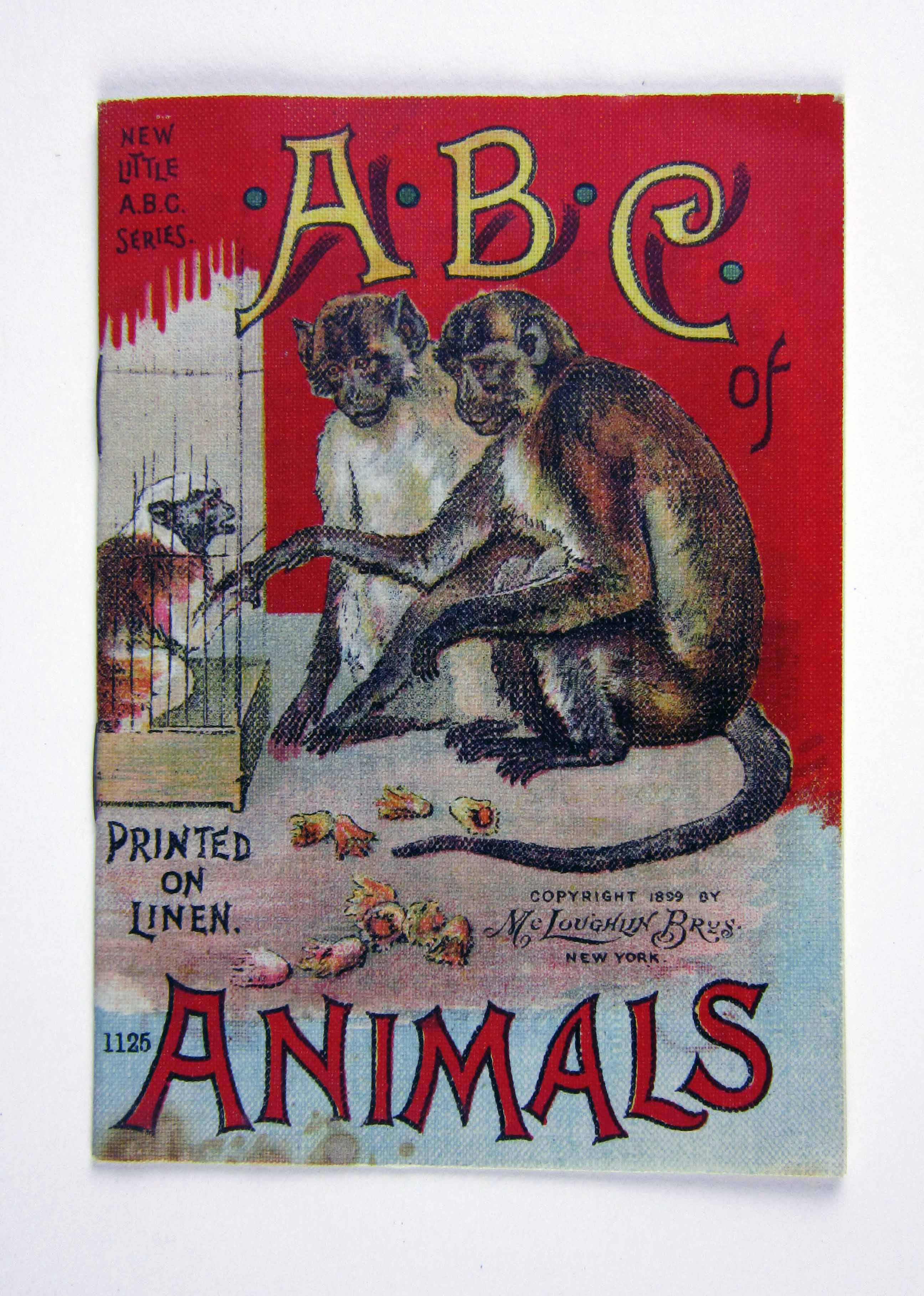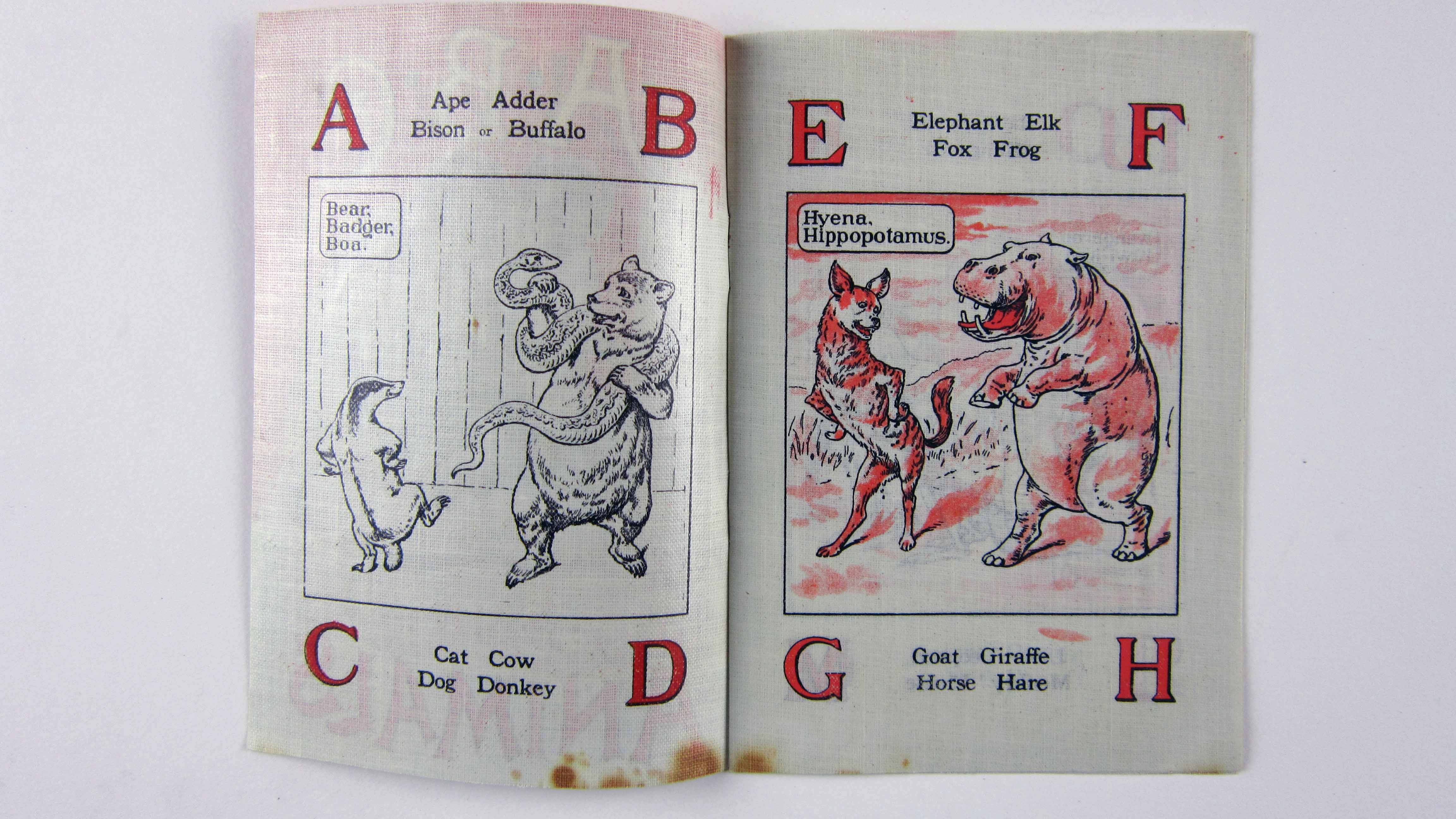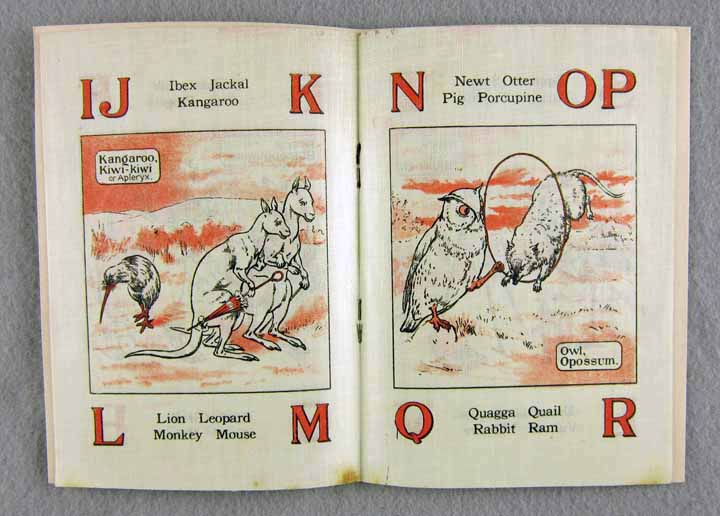

Alphabet books offer a vivid insight into the history of literacy and culture, as well as concepts of childhood. The Children's Book Collection at UCLA contains a rich array of these materials, some well-worn and much-used, some still bright and fresh. Each is a gem of print production and graphical imagery from another time and place. Though the history of alphabet books continues to the present, this exhibit focuses on the works in our collections published between 1700 and 1900, including horn books, primers, works of didacticism and seriousness, whimsy and play.
2. A Jumble ABC
3. A Little Pretty Pocket-Book
4. A New Lottery Book of Birds And Beasts
5. A Pretty Play-Thing for Children of All Denominations
8. ABC of Objects for Home And School
10. ABC with Pictures & Verses
12. Alphabet Et Instruction Pour Les Enfans
16. Dolly's ABC Book
17. Flora's ABC
18. Home ABC
22. Hornbook C. 1700
23. Large Letters for the Little Ones
24. Little ABC Book
25. Little People: An Alphabet
26. Martin's Nursery Battledoor
27. Mother Goose ABC
28. My Darling's ABC
29. Orbis Sensualium Pictus Quadrilinguis
30. People of All Nations: A Useful Toy for Girl Or Boy
31. Picture Alphabet
32. Pretty ABC
33. Railway ABC
34. Rusher's Reading Made Most Easy
38. The Alphabet of Old Friends
40. The Amusing Alphabet for Young Children Beginning To Read
42. The Child's Christian Education
45. The Easter Gift
47. The Favorite Alphabet for the Nursery
49. The Franklin Alphabet And Primer
51. The Golden ABC
55. The Moral And Entertaining Alphabet
57. The Old Testament Alphabet
59. The Picture Alphabet for Little Children
62. The Sunday ABC
63. The Union ABC
64. The Young Child's ABC, Or, First Book
65. Tom Thumb's Alphabet: Picture Baby-Books
67. Warne's Alphabet And Word Book: with Coloured Pictures
68. Wood's Royal Nursery Alphabet
Title ABC of Animals



Brief description An ABC book illustrated with drawings of animals. Printed on linen. Illustrated cloth wrappers. Gift of Jerome Cushman, 1998.
Full description The ABC of Animals is a very short alphabet book (only seven pages long) and is printed in color on linen, rather than paper. It features prominent illustrations depicting animals whose names begin with a certain letter--but only every fourth letter due to the brief page count. It uses bright colors and exotic, fun-filled, subject matter to share the alphabet with young readers.
Literacy While the ABC of Animals uses depictions of exotic animals in its introduction to the alphabet, it represents most of the letters through the animal names alone. The use of more durable material (in this case linen) shows that the process of educating children began at an early age.
The decision to use exotic animals that children might be less familiar with and without representational images seems to indicate an intent to teach children the phonics of the alphabet primarily via the sounds of words alone. Without a previous knowledge of obscure animals, children were presented with a connection primarily between the respective letters and the sounds of the animal names that use them, rather than more concrete, familiar concepts.
The notions of phonics as a fundamental building block and the connection between the sounds of animals and the sounds of the alphabet trace back to the Renaissance works of Comenius. While words in verse could also develop cultural and societal literacy by conveying meaning, the words in ABC of Animals seem to exist in a vacuum, free of deeper meanings, and concerning themselves more with the animalistic act of creating the sounds of the letters rather than the civilized meaning thereof.
Childhood The ABC of Animals, though brief, is filled with bright color, fanciful beasts, and silly antics. These elements highlight the growing sentiment that childhood was a special time, free of the realism that underscores adulthood. In its whimsical depictions of what might normally be rather dangerous animals, it discourages the young reader from a more somber worldview, and encourages play and frivolity, even in the process of learning.
Iconography The cover of the ABC of Animals hints at a growing fascination with exoticism and adaptation of design sensibilities with the East. While the inside illustrations are much less culturally specific, the diversity of animals depicted and listed, indicates an age in which young readers could be exposed to curiosities originating from every corner of the world during the height of Western imperialism.
As more people began to live in ever-larger cities, the importance of teaching children purely practical matters also began to decrease. Children no longer needed to learn about the domesticated animals of the farm and instead could enjoy learning about bears dancing with boa constrictors rather than cavorting with pigs and chickens.
Production During the end of the 19th Century, the McLoughlin Bros. published a great variety of books and other materials for the children's market. Their adoption of chromolithographic printing techniques is found in the ABC of Animals, especially in the brightly colored cover images, which would have no doubt been very appealing to audiences of all ages. Although the innovations of the industrial revolution allowed for books to be economically produced to reach more niche markets, the use of more expensive linen perhaps necessitated the smaller of size of these books.
Publisher McLoughlin Brothers
Publication place New York
Date 1899
UCLA Call Number PE1155 .A112 1899
Repository UCLA Charles E. Young Research Library, Dept. of Special Collections
Dimensions 17 cm
Technologies of production Printing
Media and Materials Printed on linen
Caption